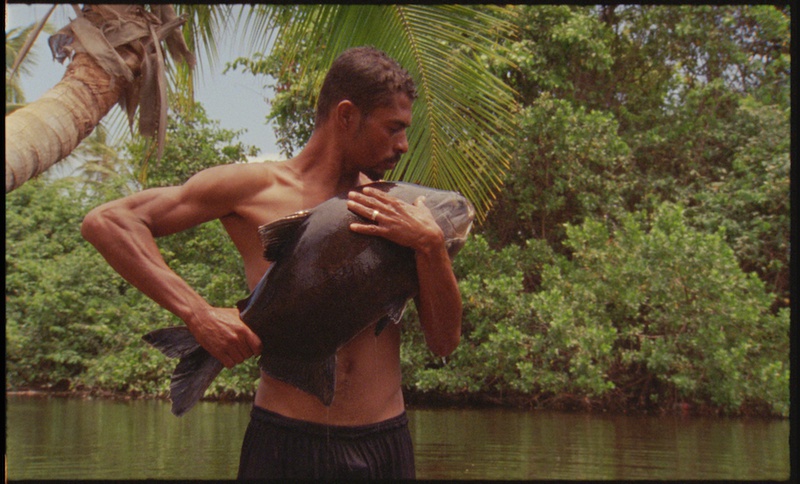In O Peixe (The Fish) we see fishermen in remote waters sailing through mangrove forests in the northeast of Brazil. Calm and carefree, they are moving in simple boats surrounded by lush nature. Only the sounds of the wind in the leaves, the river flowing and birds singing can be heard.
Various fishing methods are shown but the outcome is always the same. When a fish has been caught, the fishermen hold it tight against their body, but lovingly and in a comforting manner while the fish is gasping for air. This ritual is carried out by some ten fishermen. Are they thanking the fish for its life? In any case, these are intimate and emotional moments uniting the hunter and the prey between life and death. One of the fishermen even seems to be crying with the fish in its arms, as an alternative form of pietà.
O Peixe is filmed in a style that reminds us of ethnographic films and photography, not infrequently made by Europeans. Only when the fishermen are looking straight into the camera it is suggested that we may not be watching an objective documentary after all. But the camera does more than that. Zooming in to show the dark, muscular and sweaty bodies of the men gives this video a somewhat erotic feel. The way of filming echoes the power relationship between the fishermen and the fish at an interhuman level of race and sexuality.
In addition, the video appeals to the romantic notion that we have about exotic tribes who supposedly live in perfect harmony with nature. Thanks to De Andrade’s almost anthropological approach, we find out more about a wonderful fishing practice that emphasizes honesty and equality rather than consumption. But how truthful is this performance? Some of the other work by De Andrade is also on the dividing line between fact and fiction. By stretching his scenarios towards the boundaries of trustworthiness, he magnifies existing structures and expectations. Even though the men in this film really do work as fishermen in this area, the fishing practice we see has sprouted entirely from the visual artist’s imagination. It is indeed a myth.

